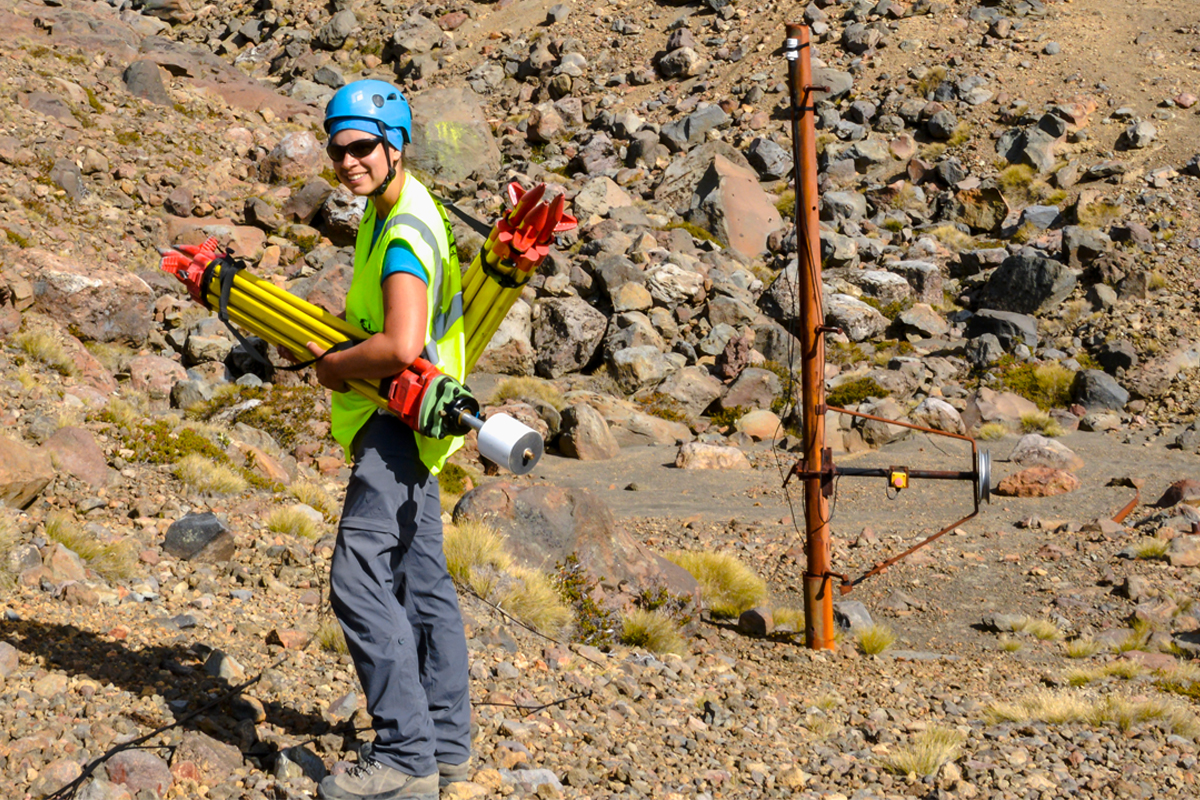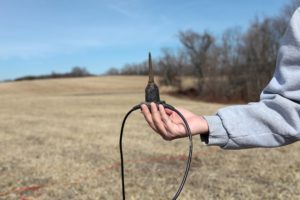All Categories
Featured
Table of Contents
Geophysical Survey In Archaeology in Myaree Australia 2021

(PREM)., and the limits in between layers of the mantle are constant with stage shifts.

Schematic of Earth's magnetosphere. Circulations from left to.
Inside the magnetosphere, there are relatively dense regions of solar wind particles called the Van Allen radiation belts. Geophysical measurements are normally at a particular time and location. Precise measurements of position, along with earth deformation and gravity, are the province of geodesy. While geodesy and geophysics are separate fields, the 2 are so carefully linked that many scientific organizations such as the American Geophysical Union, the Canadian Geophysical Union and the International Union of Geodesy and Geophysics encompass both.
What's The Difference Between A Geotechnical And ... in Quinns Rocks Western Australia 2023
A three-dimensional position is computed using messages from four or more visible satellites and referred to the 1980 Geodetic Recommendation System. An option, optical astronomy, combines astronomical collaborates and the local gravity vector to get geodetic collaborates. This technique only offers the position in 2 collaborates and is more hard to utilize than GPS.
Relative positions of two or more points can be determined utilizing very-long-baseline interferometry. Gravity measurements ended up being part of geodesy because they were required to related measurements at the surface area of the Earth to the referral coordinate system. Gravity measurements on land can be used gravimeters deployed either on the surface or in helicopter flyovers.
Satellites in area have made it possible to collect data from not only the visible light region, but in other areas of the electromagnetic spectrum. The planets can be identified by their force fields: gravity and their magnetic fields, which are studied through geophysics and area physics. Measuring the changes in acceleration experienced by spacecraft as they orbit has actually allowed great details of the gravity fields of the planets to be mapped.
Geophysicists: Salary, Career Path, Job Outlook, Education ... in Coogee Oz 2022

Considering that geophysics is concerned with the shape of the Earth, and by extension the mapping of functions around and in the planet, geophysical measurements include high accuracy GPS measurements. These measurements are processed to increase their accuracy through differential GPS processing. As soon as the geophysical measurements have been processed and inverted, the translated outcomes are outlined utilizing GIS.
Many geophysics business have actually created in-house geophysics programs that pre-date Arc, GIS and Geo, Soft in order to fulfill the visualization requirements of a geophysical dataset. Expedition geophysics is used geophysics that often utilizes remote sensing platforms such as; satellites, airplane, ships, boats, rovers, drones, borehole picking up equipment, and seismic receivers.
Aeromagnetic data (airplane collected magnetic data) gathered utilizing traditional fixed-wing airplane platforms need to be remedied for electro-magnetic eddy currents that are created as the airplane moves through Earth's electromagnetic field. There are also corrections related to modifications in measured potential field strength as the Earth rotates, as the Earth orbits the Sun, and as the moon orbits the Earth.
Geophysical Survey - An Overview in Oakford Western Australia 2021
Signal processing includes the correction of time-series information for unwanted noise or errors presented by the measurement platform, such as airplane vibrations in gravity information. It likewise involves the decrease of sources of sound, such as diurnal corrections in magnetic data., meteorology, and physics.
The magnetic compass existed in China back as far as the 4th century BC. It was utilized as much for feng shui as for navigation on land. It was not up until great steel needles might be forged that compasses were used for navigation at sea; before that, they might not retain their magnetism long enough to be useful.
By looking at which of 8 toads had the ball, one could identify the direction of the earthquake. It was 1571 years prior to the very first design for a seismoscope was released in Europe, by Jean de la Hautefeuille. It was never constructed. One of the publications that marked the start of modern science was William Gilbert's (1600 ), a report of a series of precise experiments in magnetism.
Geophysicist: Job Description, Duties And Requirements in Carramar Oz 2020
In 1687 Isaac Newton published his, which not just laid the foundations for classical mechanics and gravitation however also discussed a range of geophysical phenomena such as the tides and the precession of the equinox. The first seismometer, an instrument efficient in keeping a continuous record of seismic activity, was constructed by James Forbes in 1844. Dietmar; Sdrolias, Maria; Gaina, Carmen; Roest, Walter R. (April 2008). "Age, spreading rates, and spreading out asymmetry of the world's ocean crust". Geochemistry, Geophysics, Geosystems. 9 (4 ): Q04006. Bibcode:2008 GGG ... 9. 4006M. doi:10. 1029/2007GC001743. S2CID 15960331. "Earth's Inconstant Magnetic Field". science@nasa. National Aeronautics and Area Administration. 29 December 2003. Obtained 13 November 2018.
Leipzig. Berlin (Gebruder Borntraeger). Runcorn, S.K, (editor-in-chief), 1967, International dictionary of geophysics:. Pergamon, Oxford, 2 volumes, 1,728 pp., 730 fig Geophysics, 1970, Encyclopaedia Britannica, Vol. 10, p. 202-202 Ross 1995, pp. 236242 Shearer, Peter M. (2009 ). Introduction to seismology (second ed.). Cambridge: Cambridge University Press. ISBN 9780521708425. Stphane, Sainson (2017 ).
Latest Posts
Where Can A Geophysicist Work Other Than The Oil Industry? in Ellenbrook Oz 2021
Geophysicist in Como Aus 2022
Geophysical Surveys Definition & Meaning In Stock ... in Karrinyup Aus 2022